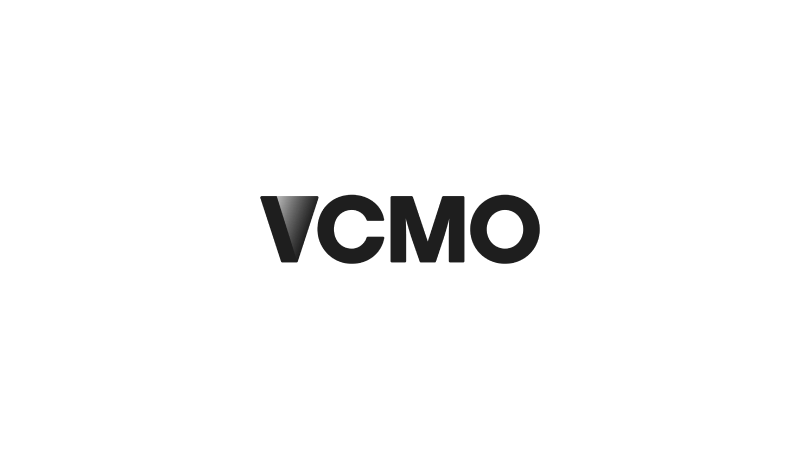What to evaluate when hiring a Fractional CMO to maximise impact and minimise risk.
Introduction: Why the Right Choice Matters
Few leadership decisions carry as much weight for growth as the appointment of a Chief Marketing Officer. The right marketing leader can transform demand generation, sharpen brand positioning, and enhance investor confidence. The wrong appointment, by contrast, can stall momentum, waste resources, and create organisational drift. For many businesses—particularly scaleups, SMEs, and investor-backed firms—a full-time CMO is not feasible. Instead, the solution increasingly lies in the appointment of a Fractional CMO: an embedded, part-time executive providing senior-level leadership without full-time overhead.
Read our article: Fractional CMO vs Full-Time CMO: Pros and Cons.
Yet the decision to hire a Fractional CMO is not one to be taken lightly. Success depends not just on hiring capability, but on aligning expectations, context, and value creation. This article explores the key considerations CEOs, founders, and investors must weigh when making this pivotal appointment.
Clarifying Business Context and Strategic Needs
The first step is internal, not external. Before engaging with candidates, businesses must understand their own context and define what success will look like. This means identifying gaps in current capability—whether strategic, operational, or talent-based—and clarifying the objectives the CMO is expected to deliver. Is the need to accelerate demand generation, prepare for funding, reposition a brand, or stabilise underperformance? Each scenario implies a different skillset and level of involvement.
The company’s stage of growth is equally important. A venture-backed Series A firm requires a CMO comfortable with building a function from zero, while a mature business in transformation may need a leader adept at restructuring teams and managing investor scrutiny. Defining scope, timelines, and budget parameters upfront ensures alignment between ambition and resource, reducing the risk of mismatched expectations later.
Evaluating Expertise and Strategic Relevance
Once needs are clarified, attention shifts to expertise. Fractional CMOs should not be generalist marketers; they must be proven leaders who have already delivered impact at scale. The most effective bring deep functional expertise—whether in B2B demand generation, international expansion, or brand repositioning—coupled with the adaptability to apply lessons across industries.
While industry familiarity can be valuable, over-indexing on sector experience may limit innovation. Often, the most powerful contribution comes from CMOs who have worked across adjacent markets, introducing fresh perspectives and best practices. What matters is not just the logos on a CV, but demonstrable evidence of commercial results: revenue growth, market share gains, or enterprise value uplift attributable to their leadership.
Assessing Fit, Collaboration & Leadership Style
Technical expertise is not enough. A Fractional CMO must operate effectively within the leadership team, influencing at board level while collaborating with internal teams and external partners. Cultural alignment is therefore critical. The wrong fit can generate friction, slow execution, and undermine confidence in the model.
Communication style also matters. Because Fractional CMOs split their time across multiple clients, clarity, transparency, and responsiveness are non-negotiable. Boards should assess not only strategic alignment but also how the individual works under hybrid conditions, manages expectations, and builds trust. An effective Fractional CMO should feel like a core member of the leadership team, even if they are only present part of the week.
Read our article: How to Choose a Fractional CMO for Your Business: A Comprehensive Guide.
Choosing the Right Engagement Model
Fractional CMOs are not one-size-fits-all. Some engagements are structured around a fixed number of days per month; others operate on retainer with flexibility to scale activity up or down. In some cases, the CMO may be largely on-site; in others, they may work virtually, leveraging digital tools to deliver leadership remotely.
The right model depends on business needs. A scaleup with an inexperienced in-house marketing team may benefit from more embedded leadership. A digitally native firm with established systems may prefer a lighter-touch virtual engagement. What matters is setting clear boundaries around availability, response times, and deliverables. Cost effectiveness is part of the equation, but the focus should always be on value creation, not hours billed.
Explore our engagement models by clicking this link.
Ensuring Commercial Accountability
Hiring a Fractional CMO is an investment, not an experiment. Accountability must therefore be built into the engagement from the outset. This begins with measurable objectives tied to commercial outcomes—whether pipeline contribution, market share gains, or improved customer retention.
Budget discipline is equally important. Experienced CMOs manage resources with the same rigour as CFOs, ensuring every pound deployed contributes to growth. Boards should expect regular reporting, transparent metrics, and objective assessments of performance. One of the unique strengths of a Fractional CMO is their independence: unencumbered by internal politics, they can challenge assumptions and make tough calls with objectivity.
“The best Fractional CMOs behave less like contractors and more like owners. They measure success in commercial outcomes, not campaign outputs.”
Rachael Wheatley - Chartered Fractional CMO, VCMO
Managing Risks of the Model
Like any leadership model, fractional engagement is not without risk. The most common challenge is overextension. A Fractional CMO juggling too many clients may struggle to dedicate the necessary attention. During the selection process, it is essential to probe how many concurrent engagements they hold and how they manage workload.
Continuity is another consideration. If a Fractional CMO steps away suddenly, what safeguards are in place to ensure knowledge transfer and operational continuity? Businesses should address this through clear contractual terms and contingency planning. Finally, there is the risk of dependency: relying too heavily on an external leader without building internal capability. Mitigation lies in structuring the engagement to combine delivery with mentoring, ensuring capability remains after the engagement ends.
Read our articles: Top Reasons for Businesses to Hire a Fractional CMO and Top Reasons to Not Hire a Fractional CMO.
Leaving a Lasting Legacy
The true measure of a successful Fractional CMO engagement is not just immediate results, but sustainable impact. Effective leaders embed systems, processes, and frameworks that endure beyond their tenure. They coach and upskill internal teams, leaving behind a stronger marketing function than they found.
Knowledge transfer should be intentional, with a clear plan for how the internal team will inherit responsibility. This not only maximises the return on investment but also ensures that marketing leadership becomes a permanent asset of the business, rather than a temporary dependency.
Conclusion: A Strategic Investment Decision
Hiring a Fractional CMO is not simply about filling a leadership gap. It is a strategic investment that can alter the trajectory of a business. The right individual brings clarity, discipline, and growth momentum; the wrong choice risks wasted time and resources.
By clarifying business needs, evaluating expertise, assessing cultural fit, structuring the right model, and embedding accountability, organisations can ensure their decision delivers enduring value. For CEOs, founders, and investors alike, the question is not whether you can afford a Fractional CMO—but whether you can afford to grow without one.
About VCMO
VCMO is a UK-based provider of fractional marketing services, supporting B2B SMEs—ranging from funded scale-ups to mid-tier and private equity-backed businesses—through key moments of growth and transformation. Its Chartered Fractional CMOs and SOSTAC® certified planners embed strategic marketing leadership into organisations navigating product launches, new market entry, acquisitions, and leadership gaps.
What’s a Rich Text element?
The rich text element allows you to create and format headings, paragraphs, blockquotes, images, and video all in one place instead of having to add and format them individually. Just double-click and easily create content.
- By following these tips, you can make sure you’re noticed on LinkedIn and start building the professional connections you need to further your career.
-

Static and dynamic content editing
A rich text element can be used with static or dynamic content. For static content, just drop it into any page and begin editing. For dynamic content, add a rich text field to any collection and then connect a rich text element to that field in the settings panel. Voila!
How to customize formatting for each rich text
Headings, paragraphs, blockquotes, figures, images, and figure captions can all be styled after a class is added to the rich text element using the "When inside of" nested selector system.


Ready to take your marketing to the next level? Let us help you get there.
Subscribe to Our Newsletter
Fractional Edge is our montly newsletter sharing expert opinion on the latest trends in fractional leadership, curated marketing content from leading sources, VCMO events, and much more. Subscribing is quick — just add your name and email.











.jpg)





